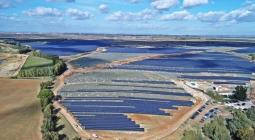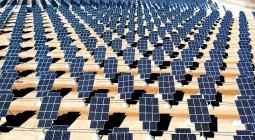Swedish Energy Agency eyes PV to achieve 100% renewables by 2040.

Though PV will remain in the shadow of wind and hydropower in the north of Europe, an ambitious solar deployment scenario in Sweden could lift the market into the gigawatt club through to 2040.
Is there a new dawn ahead for Swedish solar?
Located in the north of Europe, with sparse or even zero solar irradiation throughout winter, and dogged by numerous cloudy days, Sweden is nevertheless keen to harness solar power to help it decarbonize its energy system.
Swedish energy agency the Energimyndigheten has published a report outlining five scenarios to achieve fossil fuel free power generation. Wind and water will lead the way but officials have also examined the claims of solar.
The agency expects Sweden to generate around 160 TWh of power in 2045, with 20 TWh of annual net exports. Hydropower would provide around 70 TWh, according to the report, with the main variables land and sea based wind projects, cogeneration plants and PV systems.
The contribution of solar envisaged ranges from 5 TWh, in the more wind-dependent scenarios, to 25 TWh in the most ambitious outlook for PV.
Sweden’s sunnier south hosts around 411 MW of solar capacity at present and that figure would need to rise to more than 20 GW – making the nation a gigawatt solar market up to 2040 – to realize the most ambitious, 25 TWh solar scenario.
Transformational change
However, such an outcome would involve a solar revolution. The Engergimyndigheten calculated Sweden currently hosts 23 watts of solar capacity per capita, compared to the 500-watt figure per person seen in solar pioneer Germany in 2017. To become a 20 GW solar market would involve 2.5 kW of solar being installed for every Swede by 2040. Even the modest, 5 TWh solar scenario studied by the agency would require significant growth in the Swedish PV market.
With notable opposition to large scale solar parks in Sweden, residential and commercial and industrial systems would have to supply a large part of any advance in PV adoption. The Engergimyndigheten has suggested mandating solar on all new buildings could help the nation meet 30% of its solar ambitions.
The agency also noted the advantages of solar over wind, notably in terms of the investment required and in reducing transmission infrastructure costs, provided opposition to solar parks could be overcome near population centers. Residential PV, of course, would further advance the cause in the latter respect.
Energimyndigheten pointed out, though, that in Sweden generating solar energy is more expensive than wind. On top of a higher levelized cost of electricity, solar incurs higher demand for grid balancing and resilience, which is often also costly. The authors estimate Sweden has around 10% of variable renewable energy production, with that number set to rise to 40-50%.
Regardless of which renewables path Sweden sets off along, however, there appear to be promising times ahead for its PV sector.
May 2019
![]()




